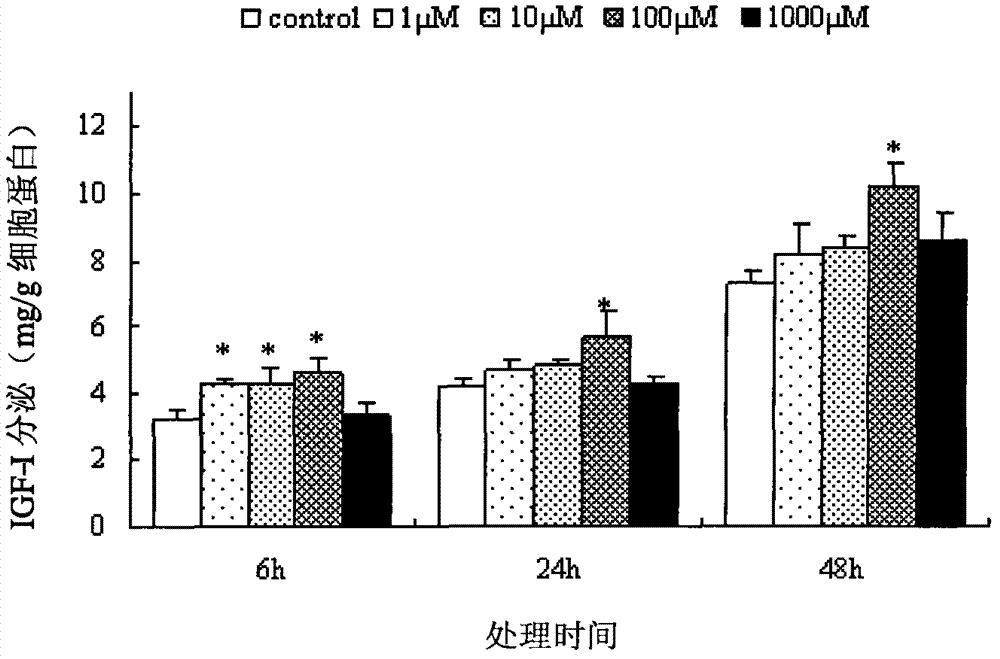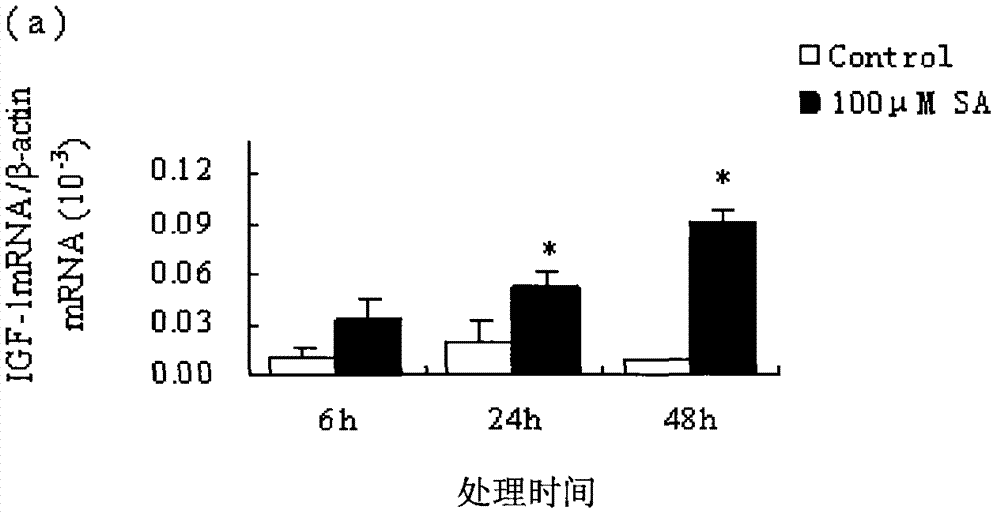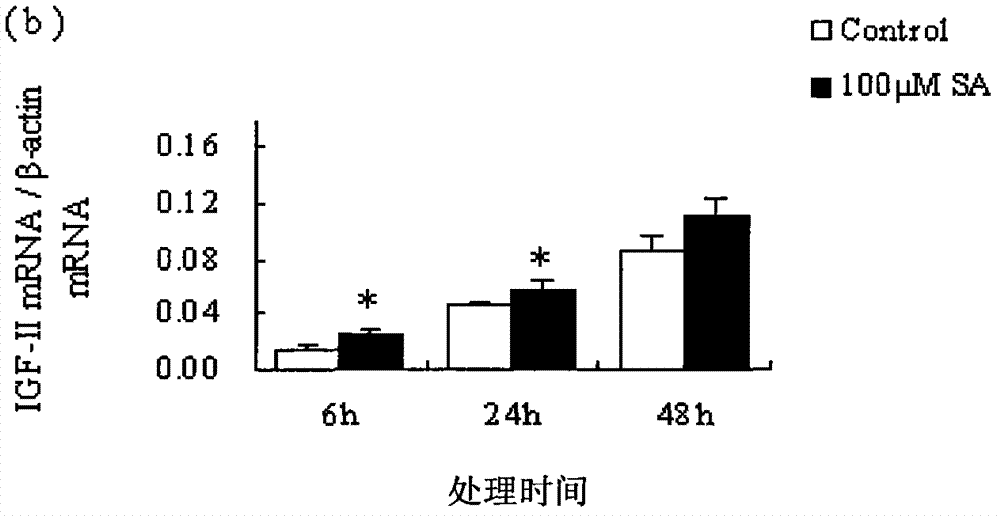Application of hexadienoic acid in preparation of pig feed additive for improving pig quality
A technology of feed additive and hexadienoic acid, which is applied in the field of pig feed containing hexadienoic acid, can solve the problems of no relevant technical reports and no hexadienoic acid found, and achieve the effects of increasing average daily gain, promoting synthesis and growth performance, and improving grades
- Summary
- Abstract
- Description
- Claims
- Application Information
AI Technical Summary
Problems solved by technology
Method used
Image
Examples
Embodiment 1
[0034] (1) Weigh hexadienoic acid (this example uses C6 medium-chain conjugated hexadienoic acid, or other commercially available hexadienoic acid used to produce additives);
[0035] (2) According to the amount of 0.5-4kg hexadienoic acid / ton of feed, the hexadienoic acid is mixed with feed premixed materials to obtain a premix; or mixed with a carrier to make a premix; the hexadienoic acid can be mixed with the feed premixed raw materials. Conventional small-scale mixing equipment, the selection and dosage of the feed premixed raw materials and carriers refer to conventional ones, and vitamin or mineral premixes can be selected; the carrier is bran, corn flour or stone powder, etc.;
[0036] (3) Mixing the premix or premix obtained by mixing in step (2) with the full feed raw materials to prepare a full feed. The premix or the premix and the full-price feed materials can be mixed with conventional large-scale mixing and crushing equipment. The full-price feed materials refer to t...
Embodiment 2
[0038] Example 2 Effect of hexadienoic acid on growth performance of piglets
[0039] In order to study the effect of adiponic acid as a feed additive, two feeding trials were carried out in the pig farm of Guangzhou Lizhi Agricultural Co., Ltd. in 2006 and in the pig sound field of Hubei Topeke Breeding Co., Ltd. in 2008. The first experimental pig group was a three-element hybrid (Changda Du), with an average initial weight of 6.8 kg, and its feeding stage was defined as weaned piglets; the second experimental pig group was purebred approximately gram, and the initial average weight was 30 kg, the feeding stage is defined as the early fattening period.
[0040] During the pre-feeding period, the pig pens were adjusted, and they were randomly divided into 4 groups according to the weight close to each other and the ratio of half male to female, with 3 replicates in each group, with 20 pigs in each replicate. The control group was fed with a basal diet; the test group was fed with...
Embodiment 3
[0053] Example 3 Effect of hexadienoic acid on blood biochemical indexes and hormone levels of piglets
[0054] The test pig herd and the test method are the same as in Example 2.
[0055] In order to observe the effects of adiponic acid on the serum lipid metabolism, protein metabolism and hormone levels of pigs, after the first test, individual pigs with similar body weights were selected, and 2 pigs were selected for each repetition. Blood was drawn from the anterior vena cava and the serum was separated by centrifugation. The serum indexes were measured, including triglycerides, total cholesterol, total protein, urea nitrogen, IGF-I and cortisol. The results are shown in Table 3.
[0056] Table 3 Effects of hexadienoic acid on blood biochemical indexes and hormone levels of piglets
[0057]
[0058] Note: IGF-I refers to insulin-like growth factor 1
[0059] 1. The effect on lipid metabolism
[0060] It can be seen from Table 3 that the serum triglycerides of the test group were sig...
PUM
 Login to View More
Login to View More Abstract
Description
Claims
Application Information
 Login to View More
Login to View More - R&D
- Intellectual Property
- Life Sciences
- Materials
- Tech Scout
- Unparalleled Data Quality
- Higher Quality Content
- 60% Fewer Hallucinations
Browse by: Latest US Patents, China's latest patents, Technical Efficacy Thesaurus, Application Domain, Technology Topic, Popular Technical Reports.
© 2025 PatSnap. All rights reserved.Legal|Privacy policy|Modern Slavery Act Transparency Statement|Sitemap|About US| Contact US: help@patsnap.com



